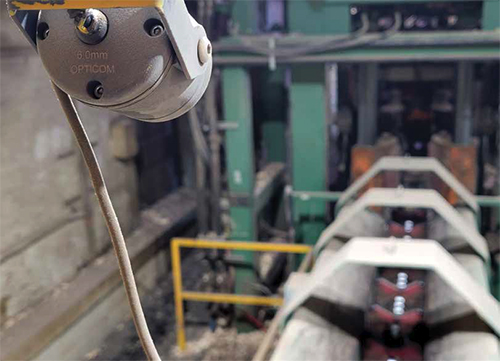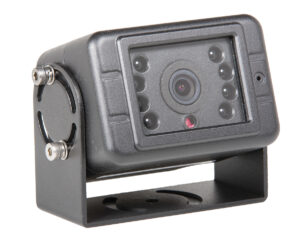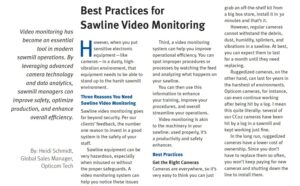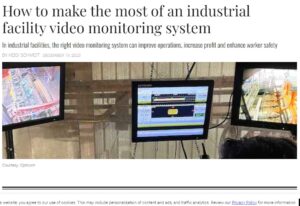This article originally appeared in Logging & Sawmilling Journal.
Opticom Technologies is helping forest companies stay on top of their game in terms of performance, with the latest in mill camera technology.
Wood processing has become faster and more automated, so strategically placed cameras sending video feeds in real time to an operator in a control room is now essential for monitoring performance of machine centres, as well as safety.
Spray Lakes Sawmills (SLS) a producer of value-added softwood lumber products in Cochrane, Alberta, is a firm believer in the benefits of video feeds.
Throughout the years, they have focused on consistent capital investment and upgrades to ensure they have equipped their sawmill with quality and proven technology. They operate three production lines.
In 2019, they upgraded to a new 10” Optimil vertical double arbor edger (VDAE) and new Autolog trimmer optimizer on their mid-range diameter log line. A few years earlier, they installed a new Comact GradExpert, computer-based, lumber grading system in their planer mill.
Their product line is highly diversified and includes dimension lumber, treated lumber and timbers, wood chips, peeled and treated fence posts, cattle bedding, bark mulches and soil blends.
They understand that keeping current with the advantages that technology presents is vital to their future.
Ensuring that they have high quality industrial cameras is near the top of their list of priorities—and their camera of choice is the Opticom Technologies CC02 industrial camera system.
Jason Newman, electrical supervisor at SLS, helps to put the importance of cameras in today’s wood processing environment into perspective.
The production line operator in the control centre at SLS has as many as 16 monitors in front of him, with strategically positioned cameras sending video feeds in real time at various angles and in various locations to these monitors.
“There can be as many as eight video feeds on one large screen,” says Newman. “The Opticom cameras feed into multiplexers that display images onto the video screens for the operator. These cameras are critical to our operation—they are our eyes on the equipment. If things go wrong, and if we don’t see what’s going wrong, things get even worse. Without them, we’d get some pretty nasty pile ups.”







